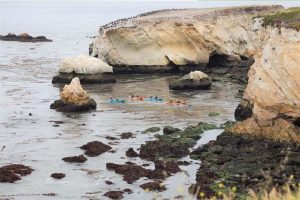
The good news is that after the explosive growth and record number of accidents and fatalities that occurred during the pandemic year of 2020, the number of recreational boating incidents and fatalities declined in 2021,” says Water Sports Foundation Executive Director Jim Emmons.
Total deaths fell from 767 in 2020 to 658 in 2021, a 14.2 percent decline. However, “Paddlecraft deaths still remain high, and kayaks are listed as the vessel type with the second highest fatalities behind open motorboats,” Emmons adds. There were 160 fatalities while kayaking, canoeing and paddleboarding in 2021, versus 164 in 2020.
The U.S. Coast Guard reports:
Kayaks are listed as the vessel type with the second highest fatalities (15 percent), behind open motorboats (44 percent)
In 2021, there were 96 fatalities while kayaking, compared to 112 in 2020
In 2021, there were 46 fatalities while canoeing, compared to 42 in 2020
In 2021, there were 18 fatalities while standup paddleboarding, compared to 10 in 2020
Where cause of death was known, 81 percent of fatal boating accident victims drowned. Of those victims with reported life jacket usage, 83 percent were not wearing a life jacket
Alcohol use is the leading known contributing factor in fatal recreational boating accidents; where the primary cause was known, it was listed as the leading factor in 16 percent of deaths
Read more: As Record Numbers Of Paddlers Take To The Water, Data Shows Accidents Surge
To reduce risk on the water, paddlers should:
Education: Get Some!
Take a paddling safety course from the American Canoe Association (ACA), your local paddling shop or outfitter, or other reputable source.
Take a boating safety course from the U.S. Coast Guard Auxiliary, U.S. Power Squadrons® or your own state’s boating agency.
Take on-the-water skills training.
Wear A Life Jacket
Everyone, even strong swimmers, needs to wear a life jacket at all times when on the water. It is extremely difficult to put a life jacket on once you fall into the water. Even a light wind can blow any paddlecraft away from you, faster than you can swim.
Always wear a USCG-approved Level 70 or Type III life jacket designed for paddling.
Dress For Immersion, Not Air Temperature
Your body loses heat much faster when immersed in cold water than it does when dry.
Avoid cotton clothing like t-shirts and jeans; they retain water and accelerate cooling when wet. Synthetic fabrics, or wool, are generally a better choice. If the water is very cold (60° fahrenheit or less), you should wear a wetsuit or drysuit.
Check The Weather
Plan for changing weather conditions. Prepare for the worst case.
Don’t forget to check tide, currents, or river levels.
Know The Local Hazards
Check navigation charts before you launch.
Check with those who have local knowledge of man-made and natural hazards, e.g. low-head dams; sweepers, strainers and undercuts; tides and currents; and rocks and shoals.
Paddle Sober And Smart
Never mix alcohol and paddling. Coast Guard and state BUI (boating under the influence) laws apply to all vessels. This includes canoes, kayaks, SUPs and rafts.
[Also Read : 5 Underrated Kayak Safety Skills ]
How The U.S. Coast Guard Research Is Conducted
The U.S. Coast Guard compiles statistics on reported recreational boating accidents. These statistics are from accident reports filed by the owners and operators of recreational vessels involved in accidents. The 50 states, five U.S. territories and the District of Columbia submit accident report data to the Coast Guard for inclusion. Access the full 2021 Boating Accident Report Data here.
Leave a Reply